Mapping Out an Argument for Stopping the Yazoo Pumps
The Yazoo Pumps would not only cost taxpayers over $300 million, they would destroy lands taxpayers have already invested to protect in Mississippi.
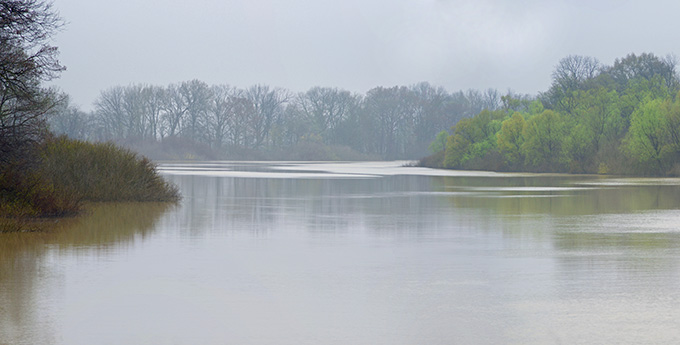
Riparian floodplains are some of the most fertile agricultural lands in the world. Nutrients are carried from upriver and deposited in the floodplain during high flows. Some of the oldest civilizations were established in floodplains due to the productivity of the soil.
Unfortunately, farming and living in these floodplains comes at a cost. The process involved in depositing those massive loads of nutrients on the land requires flooding. This, of course, can be destructive. We try to battle these floods with our man-made infrastructure, but sometimes our best designs are not good enough to keep the floodwaters off of our developed lands. Sometimes it costs more to try to keep farming in these flooded areas than it costs to restore the land to its historical ecosystem.
In the Big Sunflower River Basin, approximately 290,000 acres of natural areas are at risk of being negatively impacted by the Yazoo Pumps. Of these areas, over 220,000 are state or federally-owned. This means taxpayer money was used to protect and restore those acres. Approximately 40,000 acres were added to that sum over the past 13 years. Depending on the value of the land, the recently protected lands alone likely cost $60 to 80 million to purchase and restore. Some may ask, “Why spend that money to convert it back to a natural area?”
Conservation Easements and the Farm Bill
Through the Farm Bill and other federal programs, landowners can apply for their land to be enrolled in permanent wetland or floodplain easements. The Natural Resources Conservation Service (NRCS) then purchases the development rights to the land. In most cases, the lands enrolled in these easements are lands that are highly susceptible to flooding and erosion and have become difficult to continue farming. NRCS then pays the landowner a fair price for land that would be difficult to sell due to the flooding and erosion. Then the land is restored to a more natural system that provides numerous benefits including fish and wildlife habitat, floodwater storage, recreation and nutrient removal.
Digging into Maps
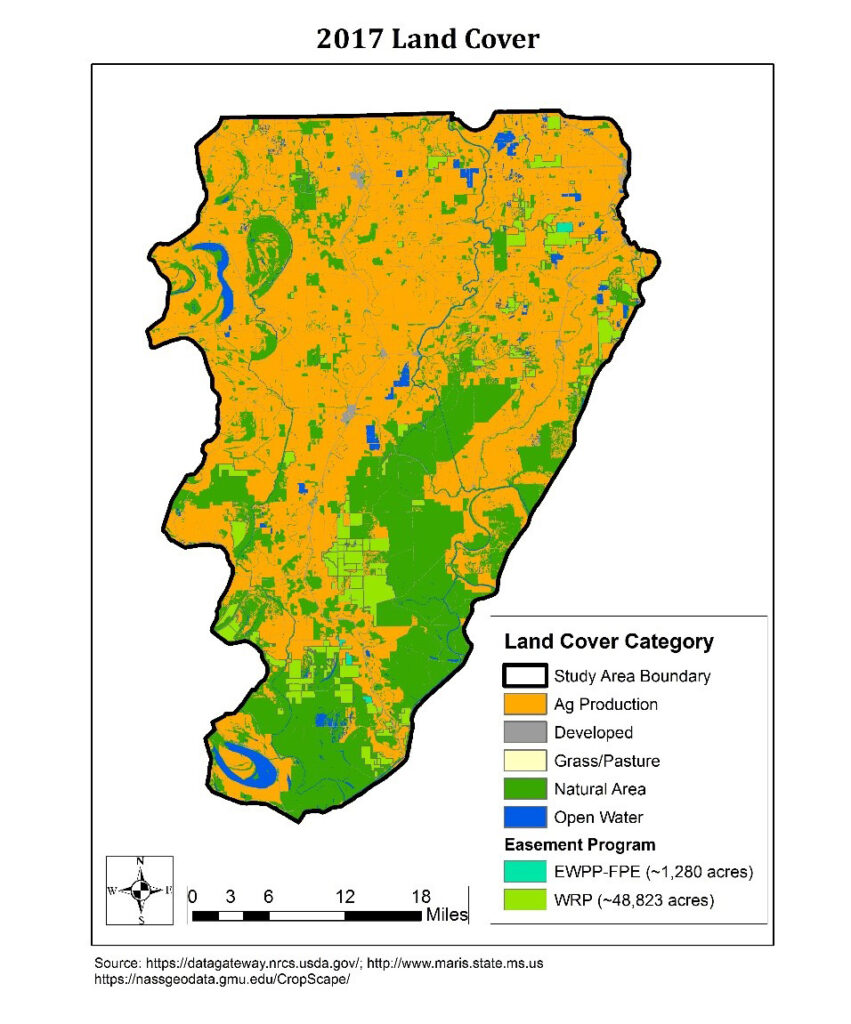
Approximately 290,000 acres of natural areas cover the Yazoo Pump Study Area. Of those, about 200,000 acres are wetlands that could be negatively impacted if the pumps are installed. Further, taxpayer dollars invested in the restoration of as many as 50,000 acres of easements could be negated.
Currently, the Yazoo Pumps project proposal lists a 926,000-acre area as the Yazoo Backwater Study Area, but during a major flood in 2011, approximately 160,000 acres of the pump area flooded. When looking at some maps, a few questions came to mind:
- If we assume the entire study area is affected by the Yazoo Pumps, how might they impact conservation land protected by taxpayer dollars?
- How will the Yazoo Pumps impact agricultural land in the entire study area?
- On the other hand, if only 160,000 acres are pumped, which of the lands in question would actually be affected by the project?
Scenario One: Pumping During All Flood Events
Some people believe that the pumps will decrease the overall risk of farming in the floodplain. The map below reveals that the Mississippi counties located in the Mississippi Delta, where most of the state’s row crop agriculture is located, receive the most crop insurance subsidies on an annual basis. The pumps would be located inside the study area as shown in the maps below. It is possible the pumps would then reduce the amount taxpayers must spend to relieve the flooding disasters in that area, but does the reduction in crop insurance subsidies pay for the pumps? No. Subsidies within the pumped area total less than $10 million each year. If the pumps cost over $300 million to construct, then it will take at least 30 years to pay for the pumps. However, by that time, the pumps will have cost more for repairs and management. Furthermore, the pumps will not relieve crop loss entirely. There will still be other problems leading to crop loss and the need for crop insurance, so we can assume there will still be millions of dollars spent on crop insurance in this area with or without the pumps.
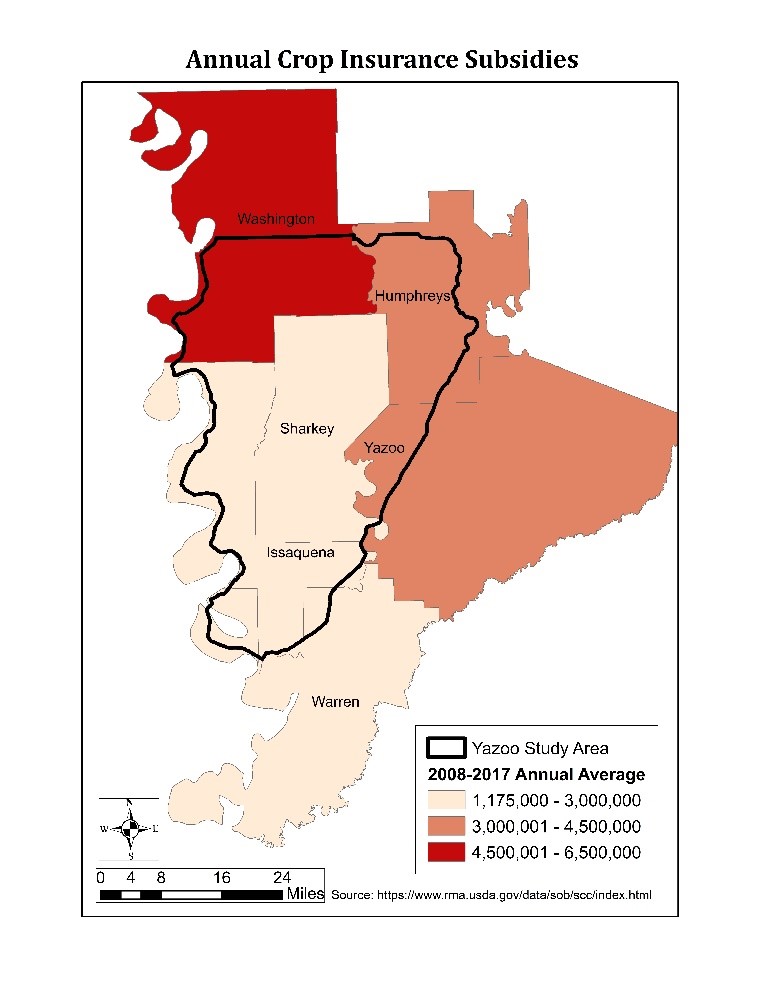
Maps showing annual agricultural crop insurance subsidies (in dollars) in all Mississippi counties and then zoomed into the Yazoo Pumps study area.
On top of the fact that this argument for building the Yazoo Pumps doesn’t make sense financially, draining the entire pump area will most definitely impact a large portion of the wetlands. At that point, we would no doubt see detrimental impacts to the natural area that cannot be quantified financially. Over 200,000 acres of wetlands would be drained to some extent, and the investment of over $100 million of taxpayer money in conservation lands would be completely negated.
Scenario Two: Pumping During Major Floods Only
In the second pumping scenario, the Yazoo Pumps are turned on only during large flood events like the 2011 flood. This scenario presents an even worse financial investment. In 2011, the Mississippi River spilled over its banks and destroyed homes, farmland and infrastructure. During that flood, approximately 160,000 acres of the pump area was flooded.
Having pumps in place could have drained some of the water, but what type of land would it have drained?
As the map below reveals, most of the flooded area was wetland. Only 19,000 acres of the flooded area is currently in agricultural production. That means only 12 percent of the flooded area would have been cropland in need of protection, while 139,000 acres of natural wetlands and open water would have been unnaturally drained. If less than 20,000 acres of cropland are protected when turning on the pumps during floods, then the investment in the pumps will never be paid off.
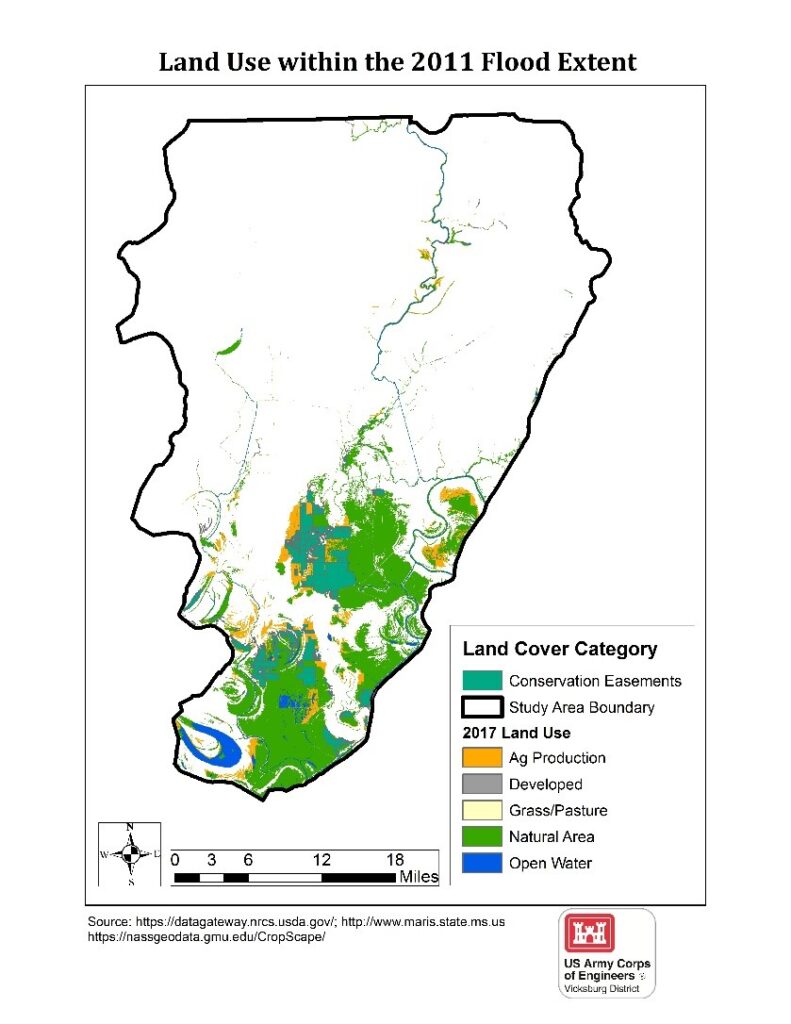
Map showing the types of lands impacted by the 2011 flood in the vicinity of the proposed Yazoo Pumps.
Impacts on People
Another issue that has not been addressed is the impact that the pumps will have on developed areas and the people who live nearby. Two counties, Issaquena and Sharkey, make up 87 percent of the economic base of the pump area. Those two counties combined contain fewer than 6,000 people. The population in the area has been consistently declining in recent decades. Furthermore, the two counties contain a little over 200 farms, most of which are large industrial operations harvesting thousands of acres each. Therefore, the investment in the pumps would not aid many farmers, and most of the benefits would go toward a select number of those farmers.
No matter how we look at this $300-million investment, it is not a good use of taxpayer dollars.
If the pumps drain the entire study area, it will cause irreplaceable damages to wetlands and not save enough money in insurance and disaster relief. If the pumps are turned on only during flood events and drain only a portion of the study area, very few acres of crops will benefit while most of the wetlands will be drained.
Although floodplains are some of the most fertile lands in the world, sometimes it is better to restore them to their natural state rather than face the risks involved with farming them. Many taxpayers have realized this in the Big Sunflower River Basin and sought to protect those resources. Let’s not drain their investments.
[su_button url=”https://act.americanrivers.org/page/4999/action/1″ background=”#ef8c2d” size=”4″ center=”yes”]Take action »[/su_button]
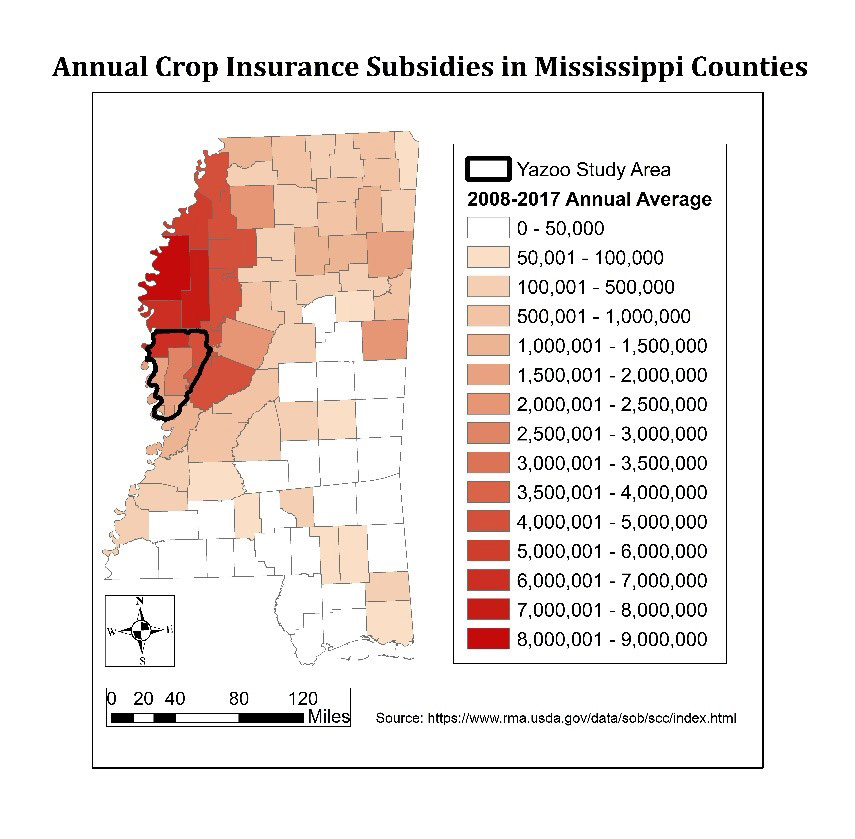
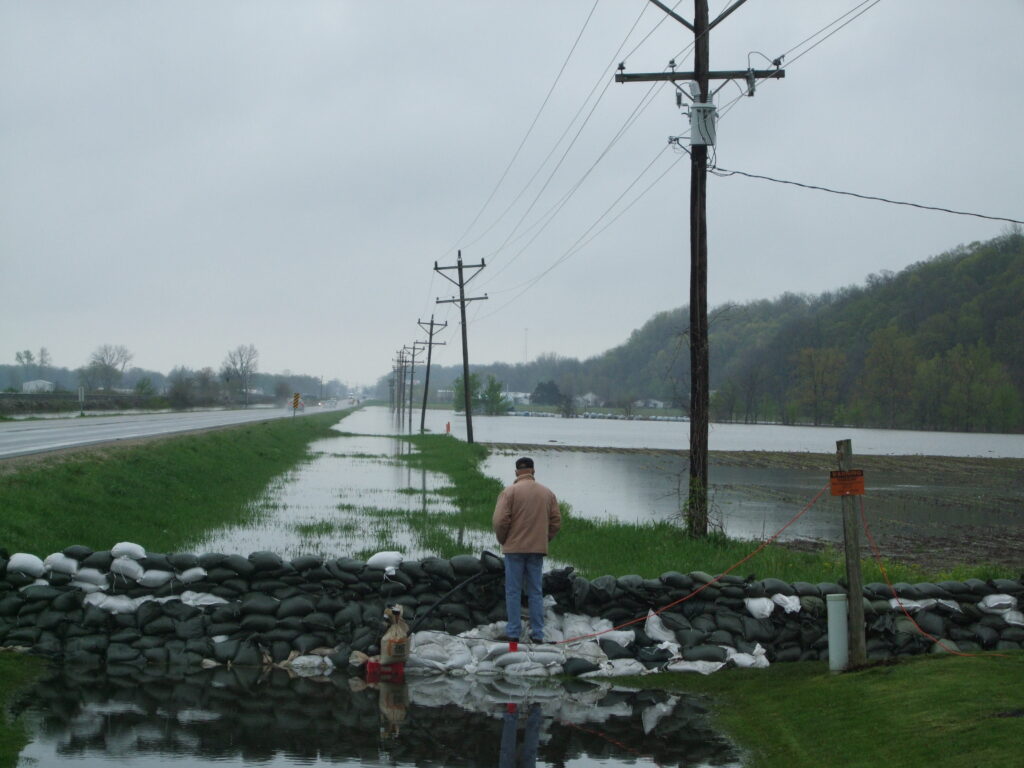
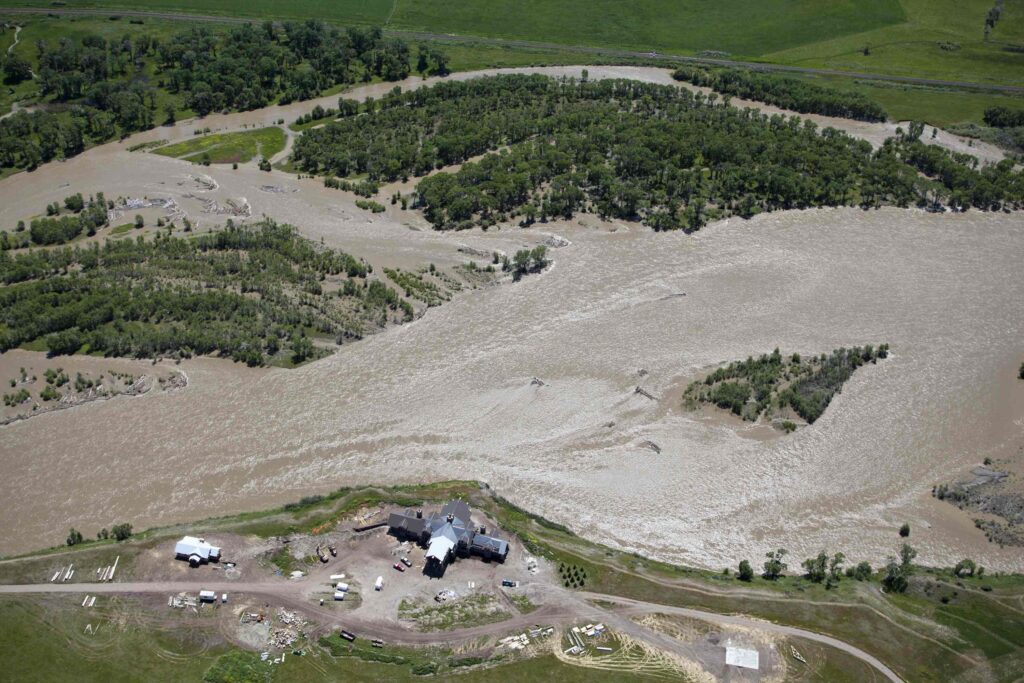
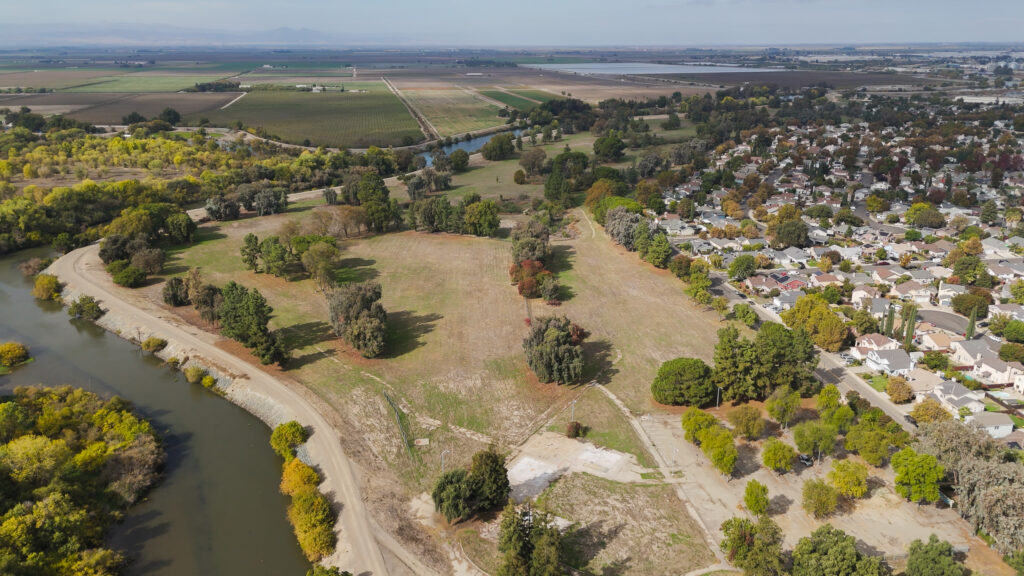
2 responses to “Mapping Out an Argument for Stopping the Yazoo Pumps”
I tend to believe the pumps would not provide enough service to warrant paying $300,000,000 taxpayer dollars. Any people living there just need to relocate.
This article is so full of errors it can’t be called journalism. The writer has absolutely no comprehension of the Yazoo Backwater Area. In 2011, the MS River flooded. The YBA is protected from MS River flooding by closing the gates at Steele Bayou. If it rains inside the Yazoo Basin while the gates are closed, the rainwater is trapped…hence the need to complete the project as designed (WITH PUMPS) like every single other Backwater Area along the Lower MS River. In 2011, it did not rain; therefore, no flooding occurred inside the YBA. Had pumps been installed, they would never have been turned on in 2011.
Further, your crop insurance information is full of holes. In the period you reported, there was no effective crop insurance program under the existing farm bill for this area. Since 2008, crop insurance proceeds paid due to flooding have exceeded $370,000,000 in the YBA. The pumps would have paid for themselves and we would have no catastrophic flooding creating the environmental disaster of 2019 in which THOUSANDS of wildlife from 200,000 acres of extremely flooded forests have drowned, starved, and been run over by vehicles. American Rivers is NOT protecting the environment. You don’t even understand the basics of this project!